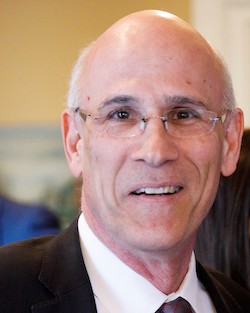Key moments in our history are often recognized later by what came next. It is undoubtedly too early to foresee all of the ripples that will flow from the Global Coronavirus Crisis of 2020, nor all of the lessons to be drawn from it, but some are taking shape.
Many of the debates to come will take place in the political arena and will ultimately be resolved by choices made in future elections. New political urgency has been given to issues such as how we care for our seniors, how we protect workers and businesses from loss of income, how hard we work to extend broadband and digital capabilities to all. These issues will blend into debates that were there before the crisis and are going to re-emerge how to mitigate and adapt to climate change, how to respond as technology continues to disrupt entire sectors, how to reconcile with Indigenous peoples, how to live with a troubled and divided neighbour and how Canada can exert influence in a time of shifting geopolitics. Politics will frame decisions about how best and how fast to un-wind the increased debt carried by all levels of government.
Public sector leaders will play their part in these debates, supplying analysis and advice and conducting public and stakeholder outreach that supports democratic government, and implementing new policies, regulations and programs. The crisis may have created, for a while, a greater awareness of the importance of a capable high performing public sector. In 2020 public services across Canada demonstrated not just resilience but responsiveness and agility. But tides come back in and there will also be a period of hindsight driven criticism and ideology-driven sniping. When it does it will be important to focus on the future.
2020 has certainly taught all sectors (coming after the shocks of 9-11 and the Global Financial Crisis) the importance of resilience. Rigorous approaches to risk management and business continuity planning will have to be updated, propagated, and exercised.
At the same time as elected governments deal with their new fiscal positions and update their political and policy priorities, there will be pressure on the public sector to constantly demonstrate it is adapting, learning from the experience of 2020, improving, and making the best use of the resources entrusted to it by Canadians. The trend toward greater transparency and accountability is likely to accelerate, spreading beyond reporting on activity and reporting on results to more clearly “showing the homework” around resource utilization and value for money.
Public sector organizations will need to juggle and reconcile multiple objectives. They will be pressed to move quickly toward more digital government and open government, while protecting privacy and defending against malicious cyber attacks. They will want to move work processes and external services to mobile devices and apps but must ensure government services work well in two official languages and for Canadians with disabilities, and that personal and commercial information is safeguarded.
Digital government’s potential can’t be achieved by splicing a phone app around old workflows. It means slogging through workflows and looking for gaps and bottlenecks and for opportunities to make the data and the software do the work in support of better decisions by humans. It will require a different mindset and methodology around procurement and greater attention to project management skills and capabilities. It will require rethinking old orthodoxies about organizational design and the role of middle management and more agile approaches to redeploying financial and human resources. Within the core public service, the complex software of job classification needs an upgrade. The greatest opportunities to breakthrough will come in changing long-standing practice models in the most change-resistant parts of the extended public sector: schools and universities, health care, and the court system.
Delivering good and effective government to Canadians will call for sustained attention to renovating the services provided by one part of government to another. “G to G” services include real property, informatics, records and information management, finance and internal audit, human resources, and pay. G to G has too often been looked at as “overhead” and been starved of attention and investment. It has been an early target during waves of austerity. The experience gained in 2020 working with a more dispersed workforce means we can expect elected governments to want a more distributed public sector footprint.
As remarkable as 2020 has been, throwing workers on a collaborative platform doesn’t mean they automatically collaborate effectively – new skills and organizational culture will have to be developed and nurtured at every level. Leading a more distributed workforce will test managers’ ability to exercise their vital role in performance management and talent development. Front line supervisors will need new tools to support them.
The greatest challenges and opportunities will be about people. As overall more services and workflows move to digital platforms the paradoxical effect is that an even greater determinant of each organization’s relative success will be its ability to attract, develop and retain people, to support them, and to develop a healthy, inclusive and change enabling organizational culture. 2020 has also been awake up call that there is much more work to do on inclusion in the public sector and as a society.
It will be vital, especially if operating budgets become tighter, not to forget the lessons learned at some pain and cost over decades about the importance of employee engagement, collaboration instead of turf and territory, safe and respectful work environments, inclusion of diverse voices and talents, and the cost of not addressing mental health and workplace wellbeing. For the next decade, the public sector will be managing a multigenerational workforce through a wave of baby boomer retirements while recruiting and promoting from younger cohorts. And all while competing for talent in a tightening Canadian labour market.
In the years that follow 2020, the public sector will evolve. The trend will be to become smaller, flatter and more distributed. As always it will be shaped and moulded by political currents, trends in society, and the rollout of new technologies. What can be different this decade is to engage and draw on the leadership within the public service to speak candidly, take risks, and contribute to developing the solutions to the challenges and the opportunities that lie ahead.

Michael Wernick retired in 2019 after a 38-year career as one of the key leaders of Canada’s world-class Federal public service, culminating in his appointment in 2016 as the 23rd Clerk of the Privy Council and Secretary to Cabinet. He is currently working with MNP as a Strategic Advisor Associate on their Ottawa Federal Government Consulting team.

